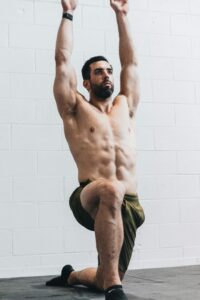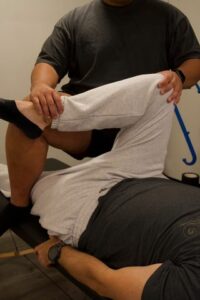Lower back pain is a common issue affecting both athletes and the general population. While athletes often experience this pain due to the rigorous demands of their sports, non-athletes can also suffer from it due to various lifestyle factors. This blog post will explore the causes, prevention, and management of lower back pain, with a focus on physical therapy, manual therapy, assisted stretching, and effective recovery strategies.
High Incidence in Certain Sports
Athletes who engage in sports involving heavy lifting, repetitive movements, or high-impact actions, such as football, gymnastics, weightlifting, and running, are particularly susceptible to developing lower back pain. It is estimated that 50-80% of athletes will experience some form of back pain during their careers. However, it’s not just elite athletes who are at risk; anyone engaging in similar activities can be vulnerable.
Types of Injuries
The causes of lower back pain in athletes can be varied. Common issues include overuse injuries, muscle imbalances, poor posture, and acute trauma. In more severe cases, lower back pain can arise from herniated discs, stress fractures, or misalignment of the spine. Understanding these potential causes is crucial for effective management and prevention.
Impact on Performance and Recovery
Lower back pain can significantly hinder an athlete’s performance, often leading to missed training sessions and competitions. Over time, chronic pain may lead to altered movement patterns, reduced strength, and an increased risk of re-injury. Athletes typically rely on a combination of physical therapy, strengthening exercises, and rest to recover. Addressing the root causes of pain is essential to prevent recurrence and ensure optimal recovery.
Recovery Strategies
1. Rest and Active Recovery
Initially, rest is important for recovery. However, avoiding complete inactivity is crucial. Engaging in light, low-impact activities like walking or swimming can promote healing and prevent stiffness. Gradually introducing mobility exercises and stretching focused on the hip flexors, hamstrings, and lower back muscles can aid in recovery.
2. Core Strengthening
A strong core alleviates pressure on the lower back. Core exercises, such as planks, dead bugs, and bird dogs, help build core stability and support the spine, reducing the likelihood of injury.

3. Flexibility and Assisted Stretching
Stretching the muscles surrounding the lower back, including the hamstrings and hip flexors, can reduce tension and improve mobility. Incorporating assisted stretching into your routine can further enhance flexibility and prevent future injuries.
4. Physical Therapy
Physical therapy plays a critical role in managing lower back pain. A physical therapist can design a tailored rehabilitation program focused on strengthening weak muscles, improving posture, and restoring flexibility.
5. Manual Therapy
Manual therapy techniques, such as spinal manipulation or massage therapy, can help alleviate pain and improve spinal alignment. Physical and sports therapists often employ these methods
to aid recovery.
Conclusion
Lower back pain is a prevalent issue that can significantly impact daily life and athletic performance. By understanding its causes and implementing effective recovery strategies, individuals can manage their pain and prevent future occurrences. Whether through physical therapy, manual therapy, or assisted stretching, taking proactive steps toward recovery will ensure a healthier, more active lifestyle.
If you are interested in learning more about how we can help you reach your goals and achieve your best performance, feel free to contact us! Our team of dedicated professionals is here to support you on your journey to recovery and wellness.
Whether you’re an athlete looking to optimize performance or someone seeking relief from everyday discomfort, we offer personalized solutions tailored to your unique needs. Don’t let lower back pain hold you back any longer—reach out to us today and take the first step towards a pain-free, active life! 🌟



